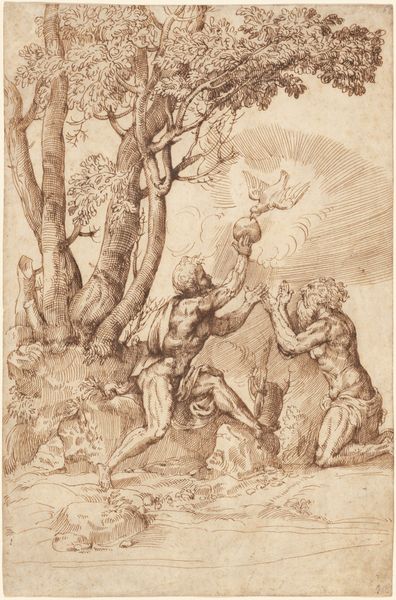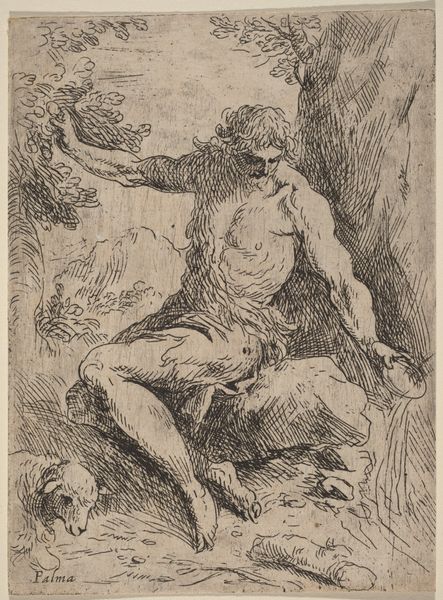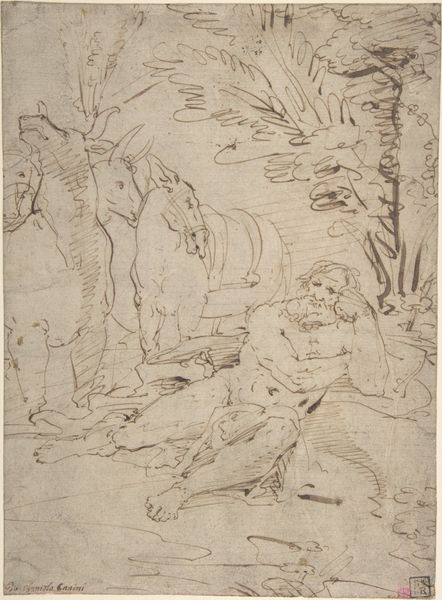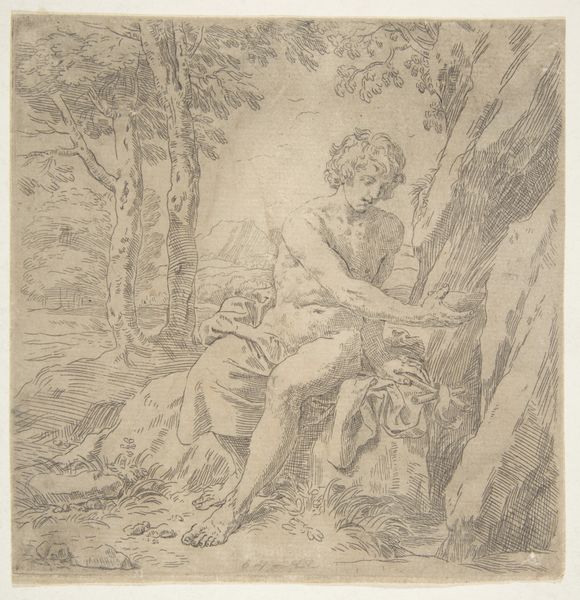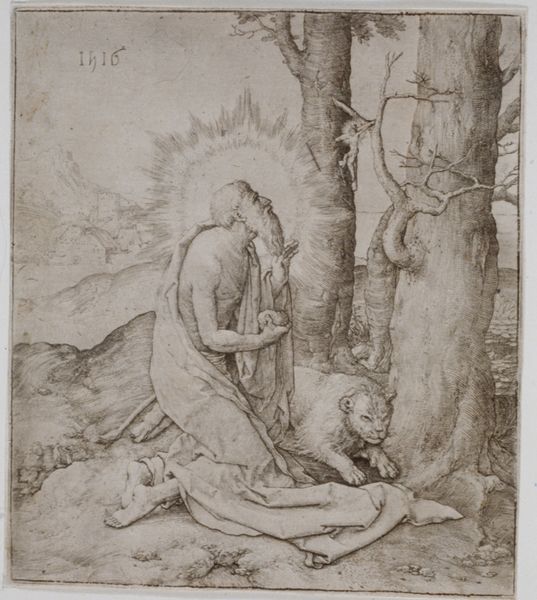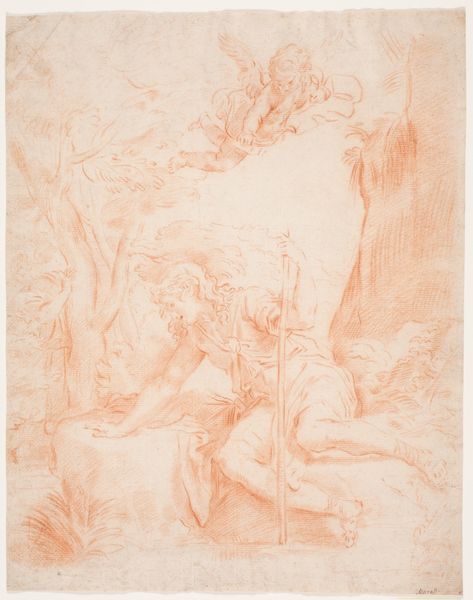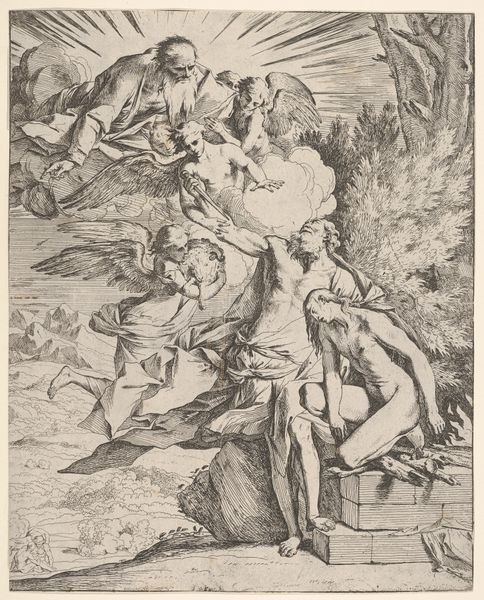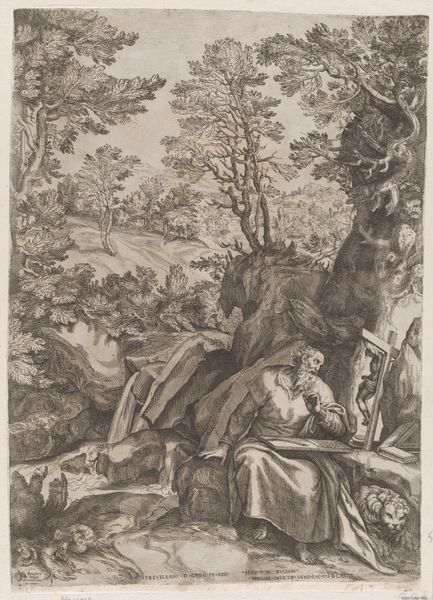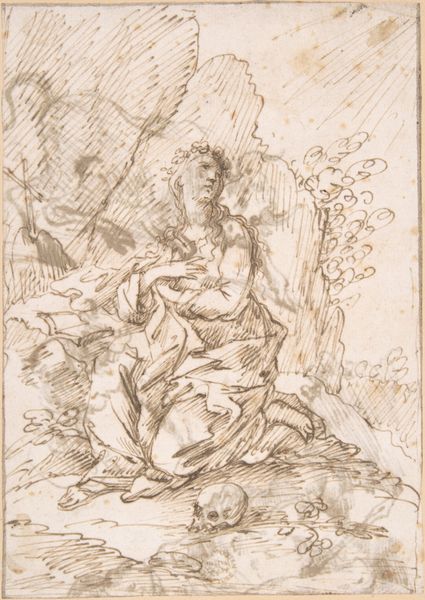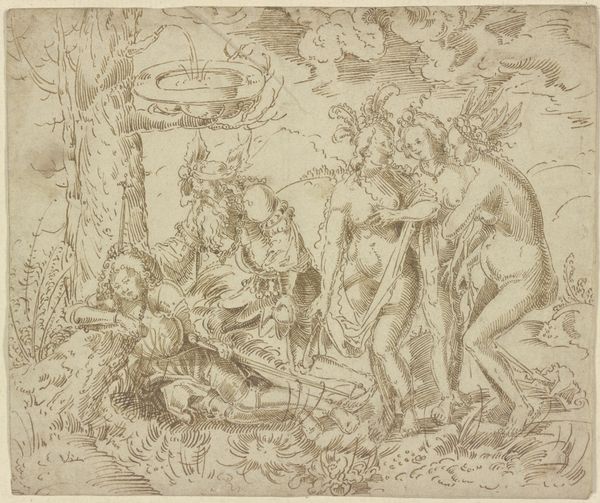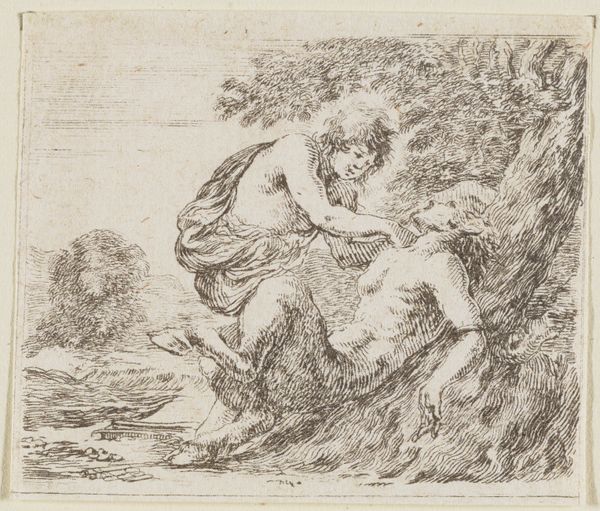
drawing, ink, pen
#
drawing
#
pen sketch
#
pencil sketch
#
landscape
#
figuration
#
11_renaissance
#
ink
#
pen
#
history-painting
#
italian-renaissance
Dimensions: overall (approximate): 30.7 × 21.6 cm (12 1/16 × 8 1/2 in.)
Copyright: National Gallery of Art: CC0 1.0
Editor: This is Domenico Campagnola's pen and ink drawing, "Saint Jerome Reading in the Wilderness," from about 1520-1525. The composition has such a sense of movement with all of the pen strokes. What stands out to you most in this piece? Curator: I’m immediately drawn to the complexities of how it situates the solitary scholar, Saint Jerome, within a potentially dangerous, untamed space. We must consider how the Renaissance idealizes a return to nature but often overlooks the power dynamics inherent in that ‘return’. Jerome isn't simply finding enlightenment; he is enacting a form of cultural dominance through his scholarly pursuit, even in isolation. Notice the lion. Editor: That's a really interesting point. I hadn't thought about it like that, but it's true; there is still a power dynamic being presented here. So, the lion is not really acting as a protector? Curator: Well, we should interrogate this perceived notion of 'protection.’ Who needs protection, and from whom? Consider that in many narratives, the wild is feminized, seen as something to be conquered and controlled. Is Jerome, with his text, enacting that control? Does the lion challenge or reinforce this notion? What readings emerge from seeing Jerome's project as a form of early colonialism on the self? Editor: So it's like, even in his solitary quest, Jerome is participating in a broader project of claiming and ordering the world. Curator: Exactly! And what does it mean that this ordering is being done through a very specific lens – that of a privileged, educated, European male? It prompts us to consider the politics embedded in the act of interpreting and documenting the world, even a "natural" one. Editor: I never would have thought to consider this piece in terms of colonialism, but I can definitely see those ideas embedded here. It definitely adds more layers to the image. Thanks for that! Curator: Of course! The drawing invites us to think critically about whose perspectives and experiences are centered in the narratives we construct about history, knowledge, and our relationship with the environment.
Comments
No comments
Be the first to comment and join the conversation on the ultimate creative platform.

